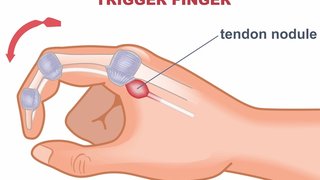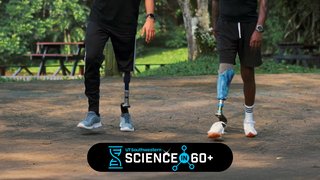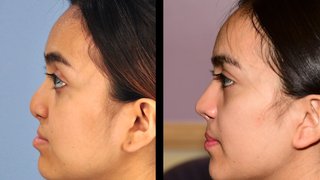Diabetic foot ulcers: Surgery options to treat and prevent podiatric emergencies
December 22, 2021

Diabetic foot ulcers – open wounds on the feet – are all too common in patients with uncontrolled blood sugar levels. In fact, 15% of people with diabetes will experience a foot ulcer, and 1 in 5 of those will be hospitalized for the condition.
Two of the most common disease processes that affect the feet in people with diabetes are diabetic peripheral sensory neuropathy and peripheral arterial disease.
Peripheral arterial disease involves damage to the medium and small arteries that supply blood and oxygen to nourish foot tissue.
Peripheral sensory neuropathy affects more than half of people with diabetes. Neuropathy damages the nerves in the feet, so people experience numbness or tingling, or feel like they have a heavy stocking or mud caked on their foot. In some cases, people experience burning or shooting pains in their feet, which are often worse at night.
Sensory neuropathy also creates an environment in which people can injure their feet but not feel the injury. For instance, people with diabetic sensory neuropathy can burn their feet with bath water that is too hot or when they walk on hot pavement barefoot during the summer.
Foot ulcers develop when the skin is exposed to repetitive pressure on the bottom of the foot, or from friction from poorly fitting shoes. Normally, people would feel pain because their shoes are rubbing against their foot, but neuropathy masks the pain.
Patients often discover their ulcers because blood leaves a stain on their stockings or on the floor – not because they feel the ulcer. Because many patients with diabetes have neuropathy, sometimes they do not notice the wound until it grows larger or becomes infected.
Foot ulcers are a leading cause of foot infections in adults. Often, the combination of ulceration, nerve damage, infection, and poor blood flow to the foot leads to toe, foot, or leg amputation in patients with diabetes.
Diabetic ulcers can become nonhealing wounds that persist for months or even years. In some cases, the ulcers heal but return in the same spot – after you’ve had one, you’re more likely to develop another. Getting specialized foot care is key to protecting your foot and your overall health. Many centers offer special shoes and insoles, diabetes education, and regular foot evaluations to reduce the risk of re-ulceration.
Diabetic foot ulcer care
Complex, severe, or recurrent diabetic foot ulcers require a higher level of care. UT Southwestern’s Wound Care Clinic offers advanced surgical options, such as:
- Plastic surgery skin grafts for persistent or nonhealing ulcers
- Podiatric surgery to correct foot deformities, such as high arches or flat feet
- Vascular surgery to reduce the risk of developing new or recurring ulcers
We approach each patient’s care as a team, bringing together the expertise of our colleagues in endocrinology, physical rehabilitation, and limb salvage to personalize each patient’s treatment plan.
If you are struggling with a diabetic ulcer despite conservative treatment – or if you are concerned about your risk of recurrence – surgery might be a good option for you.

What types of surgeries can help with diabetic ulcers?
As podiatrists, we consider future foot function along with wound healing. If surgery is right for you, we will recommend a procedure that treats your pain or infection now so you can move more easily and with less pain.
Procedures we might discuss include:
- Debridement to remove dead or infected skin and tissue from the wound, which encourages healing.
- Skin grafts to reconstruct weakened or missing skin, which promotes healing and helps reduce the risk of infection. Skin can be taken from another part of the patient’s body, such as the thigh, or come from a donor; it depends on each individual.
- Vascular surgery, which helps restore proper blood flow to the wound site, promoting healing and healthier skin.
- Shaving or removing bone to correct deformities that put pressure on the surrounding area, such as hammertoes, bone spurs, or bunions.
- Reconstruction of deformities such as flat or high-arched feet, which can cause areas of high pressure.
- Realigning or fusing joints to address biomechanical defects that increase pressure
- Lengthening tendons to release tension and take pressure off an ulcer, allowing it to heal, or prevent a new one from forming.
- Amputation of a toe or the foot if tissue is severely damaged or an infection will not stop spreading. Our limb salvage team exhausts all other options before recommending amputation.
Patients who have the most success after surgery are typically those who make a game plan for recovery. Your doctor will talk with you about what to expect before, during, and after your procedure. For example, you may need to have someone stay with you a few days or help with errands, depending on the procedure.
Long term, you will need to keep your nutrition, blood sugar levels, and blood flow on track to reduce the risk of recurrence. Your care team will work with you to make manageable changes to support your long-term health goals.
Related reading: 3D bunion surgery gets you back on your feet faster
5 foot care tips to prevent diabetic foot ulcers
Along with controlling your blood glucose levels, these basic foot care tips can help reduce your risk of foot ulcers and improve your overall health.
1. Inspect your feet every day. You may not have the flexibility to see the bottoms of your feet, or you may not see well. If this is the case, have your spouse or a family member inspect your feet and shoes for cuts, bruises, cracks, blisters, redness, or other signs of an abnormality. Call your doctor if you notice even a small wound – the earlier we can help, the better.
2. Show your doctor your feet. Remove your shoes and socks when you visit your primary care doctor. Ask them to examine your feet for nerve damage and circulation, even if they don’t initiate the request.

New cooling insoles developed by UTSW scientists reduce foot temperature, diminishing the risk of diabetic foot ulcers.
3. Wear shoes and socks all the time, even in the house. If you have diabetic neuropathy, you might not feel it if you step on something sharp. Special shoes and insoles can help protect your skin from developing ulcers. Inspect your shoes before you put them on, and get new shoes on a regular basis.
4. Choose properly fitting shoes. Avoid pointed toes, high heels, or shoes that are too tight, loose, or short. Your doctor can prescribe stylish, custom-fitted shoes or insoles that are designed specifically for people who are at high risk of developing foot complications.
5. Use an infrared thermometer to see if you have diabetic hot foot. Unrecognized injury causes foot ulcers. This tool can detect potential inflamed “hot spots” in your feet. The temperature of your skin usually increases 4 degrees Fahrenheit or more days and even weeks before an ulcer develops. Keep a log of the readings from different parts of your foot so you can watch for changes. Call your doctor if you detect an increase of 4 degrees Fahrenheit.
Preventing diabetic ulcers can feel like a full-time job – but you don’t have to tackle the challenge alone. Whether you are focused on avoiding diabetic foot ulcers or need advanced care for a nonhealing wound, the specialists at UT Southwestern and its Wound Care Clinic will be by your side every step of the way.
To talk with a diabetic ulcer expert, call 214-645-8300 or request an appointment online.












